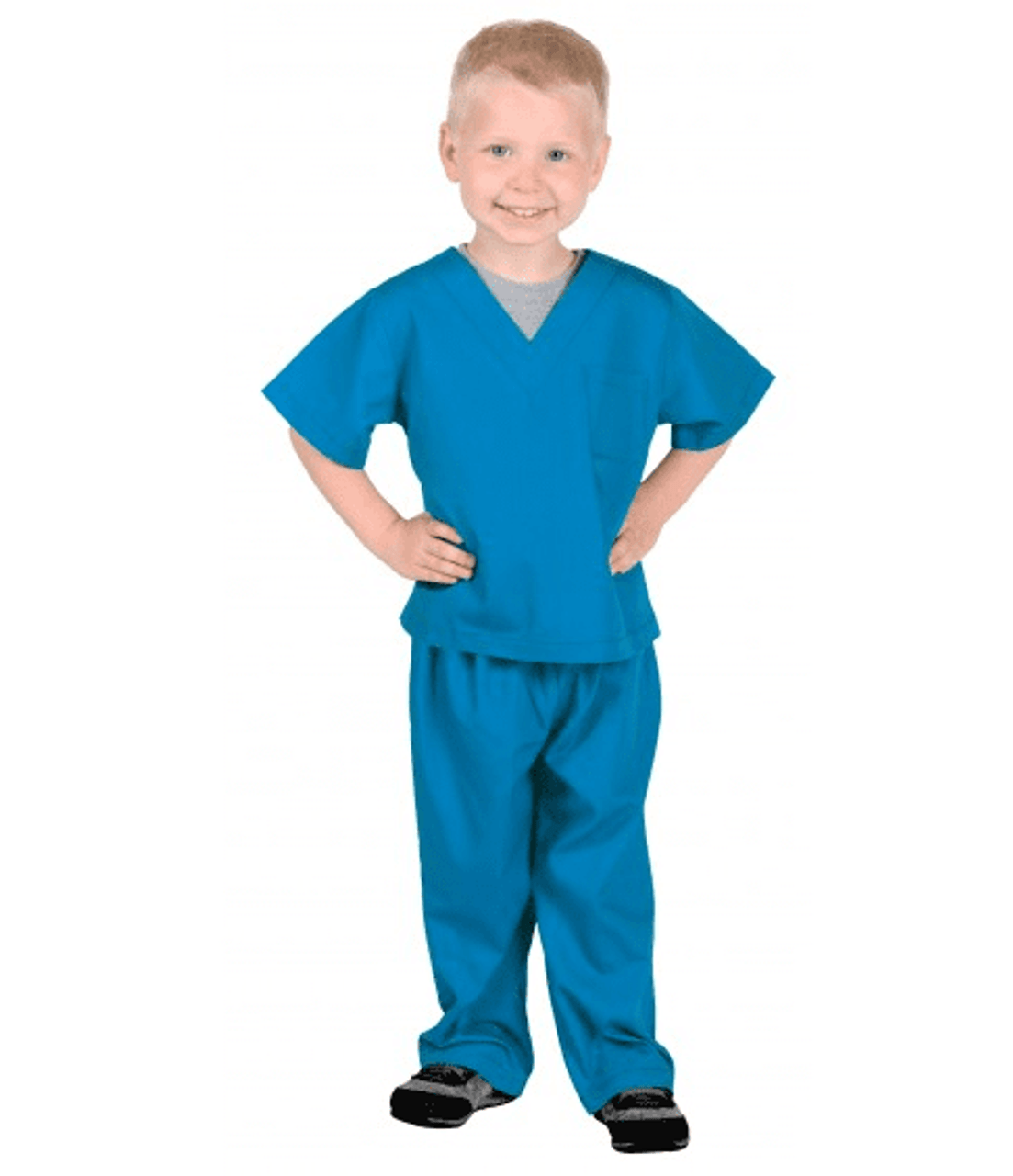Discover the Importance of Scrubs in the Clinical Profession
In the clinical profession, scrubs serve a complex function that expands beyond mere clothing. Their origins in the 1960s highlight an evolution driven by the demand for hygiene, comfort, and professionalism and reliability in high-stakes atmospheres. As a barrier versus pathogens, they play a critical duty in infection control, while their style enhances the mobility necessary for healthcare workers. Furthermore, scrubs add significantly to group identification and can affect patient perceptions. Comprehending these measurements triggers a deeper expedition of just how this relatively easy garment forms the medical care landscape and the experiences of those within it.
History of Medical Scrubs
Exactly how did medical scrubs end up being a staple in healthcare settings? The evolution of clinical clothes can be mapped back to the early 20th century when healthcare professionals mainly put on white coats and attires.
In the 1960s, the introduction of scrubs noted a substantial change in clinical clothing. Initially, scrubs were made for use in the operating space, offering a sterile and functional setting for surgeons and their teams. Made from lightweight and resilient materials, these garments permitted simplicity of motion and were easier to tidy than traditional attires.

Hygiene and Infection Control
Acknowledging the important duty of health and infection control in healthcare, medical scrubs have become essential in minimizing the danger of contamination. Scrubs work as a barrier between healthcare professionals and potential virus, making sure that pollutants do not transfer in between individuals and carriers. The style and materials made use of in scrubs are specifically selected for their capacity to withstand repeated laundering at high temperature levels, which is crucial for effective sanitation.
Furthermore, the use of standardized shades and designs in scrubs aids to identify clinical personnel rapidly, enabling effective feedback in emergency situation situations. This harmony not only enhances professionalism but also strengthens a culture of hygiene and security within medical care settings.
Convenience and Capability
The convenience and capability of clinical scrubs are paramount in supporting health care experts throughout their demanding shifts. These garments are particularly developed to enhance movement and offer simplicity of movement, allowing healthcare employees to execute different tasks effectively. The fabric used in scrubs is generally lightweight and breathable, which helps regulate body temperature level and reduce pain in high-stress atmospheres.
Additionally, the design of scrubs frequently incorporates functions that improve their usefulness. Pockets are strategically placed for easy access to essential devices and tools, making it possible for fast feedbacks during patient treatment. The fit of scrubs is likewise important; they ought to enable a full series of movement without being overly loosened to avoid getting on devices.
Furthermore, clinical scrubs are commonly made from products that are both easy and sturdy to clean, sustaining the high demands of the health care setup. This sturdiness makes certain that scrubs stand up to the rigors of regular cleaning while maintaining their appearance and capability. Ultimately, the best combination of convenience and capability in scrubs not only aids health care specialists in their daily tasks however likewise adds to overall job contentment and health.
Professionalism And Trust and Group Identification
Fostering expertise and team identity within the medical occupation is substantially affected by the selection of scrubs worn by health care workers. Scrubs function as an attire that not just makes certain a level of standardization yet additionally advertises a feeling of belonging amongst clinical groups. When all participants of a medical care device wear coordinated scrubs, it creates a graph of unity, which is vital in high-pressure atmospheres.
Additionally, the style and color of scrubs can reflect the values and ethos of a healthcare institution, reinforcing its goal and professionalism. Healthcare facilities that embrace particular colors or branding in their scrubs signal click to staff members and individuals alike this page the severity of their commitment to quality treatment.
In addition, using scrubs can decrease ordered distinctions within the clinical team, promoting a joint environment. This harmony enables medical care experts to concentrate on synergy and individual treatment as opposed to specific clothing. Inevitably, the thoughtful choice of scrubs can boost professionalism, advertise team identification, and add to a natural workplace, all of which are crucial for delivering optimum client end results in the medical area.
Scrubs in Individual Perception
While scrubs are largely developed for capability and hygiene in clinical settings, they likewise play a critical function in forming client assumption of healthcare specialists. The visual effect of scrubs can substantially influence exactly how people view their caregivers, cultivating a sense of count on and confidence. The harmony of scrubs contributes to a professional image, producing a setting where patients feel they are in competent hands.
People often associate scrubs with proficiency and authority, analyzing their visibility as an indication of professionalism and readiness - Scrubs On Sale. This assumption can reduce anxiousness, aiding patients feel a lot more comfy and secure during medical encounters. In addition, the choice of color and design can even more improve this picture; for instance, softer colors may stimulate peace, while brighter colors may recommend approachability.

Verdict
Finally, the importance of scrubs in the medical profession extends past simple outfit. They offer as an essential element of hygiene and infection control, boost comfort and functionality for healthcare employees, and promote professionalism and reliability and group identity. The aesthetic effect of scrubs affects individual perception, fostering trust and peace of mind. Ultimately, scrubs symbolize the worths of efficiency, security, and professionalism, contributing to an efficient medical care environment that prioritizes both personnel and individual wellness.
Acknowledging the important function of health and infection control in medical care, clinical scrubs have actually become crucial in lessening the threat of contamination.The convenience and capability of medical scrubs are critical in supporting medical care specialists throughout their requiring shifts (Cupping Set).Promoting expertise and team identity within the clinical occupation is considerably affected by the selection of scrubs worn by healthcare employees.While scrubs are mostly developed for capability and health in medical setups, they also play an essential duty in forming individual perception of medical care professionals.In addition, scrubs serve as an aesthetic hint that distinguishes health care suppliers from other employees in a medical center, reinforcing the functions of those involved in individual treatment